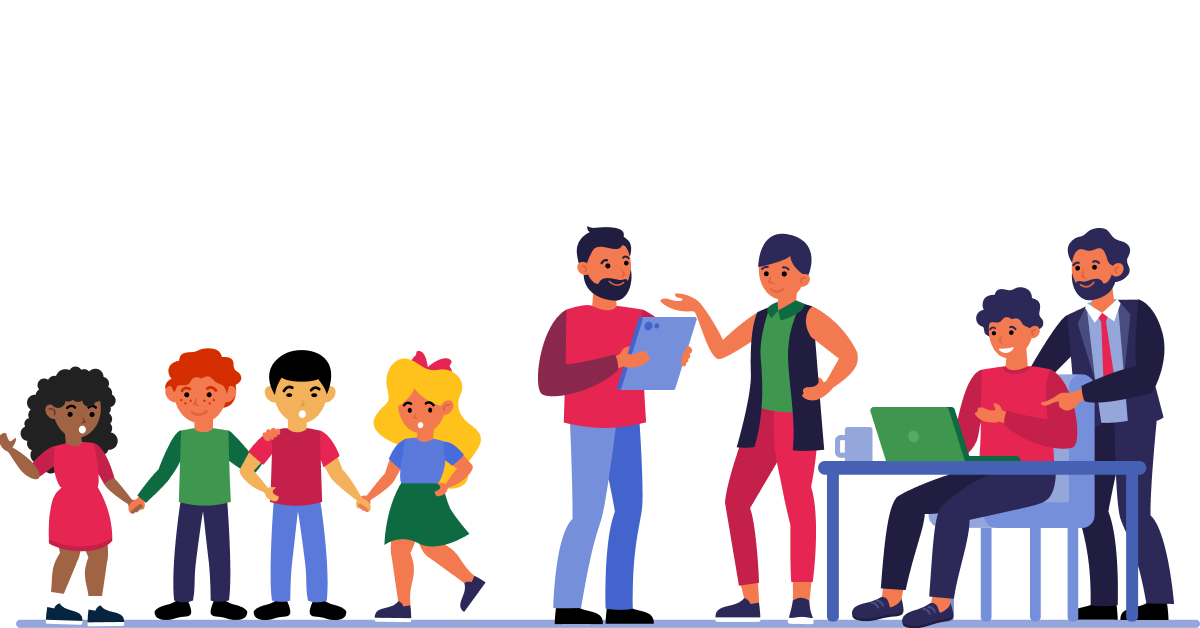
Introduction
Education is a journey that involves more than just teachers and students. At its heart, the success of every young learner hinges on a strong partnership between parents and educators. This collaboration can shape not only academic achievements but also emotional growth and social development. When parents and teachers come together, they create an environment where children thrive.
The importance of this teamwork cannot be overstated. It goes beyond simply attending parent-teacher conferences or signing homework sheets; it’s about creating meaningful connections that enhance the educational experience for everyone involved. In this blog post, we will explore why fostering these relationships is vital, as well as the numerous benefits they bring to students, parents, and teachers alike.
Join us as we delve into practical strategies for making parent-teacher collaboration effective while addressing potential challenges along the way!
Why Collaboration between Parents and Teachers is Important?
Collaboration between parents and teachers is crucial for a child’s educational journey. When these two key figures work together, they create a support system that fosters academic success.
Parents bring valuable insights about their children’s behaviors and preferences. This information helps teachers tailor their approaches to meet individual needs.
On the other hand, educators can share progress updates and strategies that empower parents at home. This two-way communication builds trust and strengthens relationships.
Moreover, active collaboration enhances student engagement. When children see their parents involved in school activities or discussions with teachers, it reinforces the importance of education.
As a result, students feel more motivated to participate actively in class and take ownership of their learning experiences. A united front from both educators and families sets the stage for sustained academic achievement throughout school years.
Benefits of Parent-Teacher Collaboration for Students
When parents and teachers work together, students thrive. This collaboration creates a supportive environment that promotes academic success.
Students benefit from consistent messaging about expectations. When both parties are aligned, it reinforces the importance of learning. This clarity helps children understand what they need to achieve.
Additionally, open lines of communication encourage students to express their feelings and concerns. They feel valued when adults engage in their education journey. It builds self-esteem and fosters a positive attitude toward school.
Furthermore, collaborative efforts can lead to tailored support for individual needs. Teachers who know the home environment can adapt strategies that resonate with each student’s unique circumstances.
This partnership instills a sense of belonging among students. They realize they have advocates in both their home and school settings dedicated to their growth and well-being.
Benefits of Parent-Teacher Collaboration for Parents
Parent-teacher collaboration empowers parents. Engaging with teachers creates a bridge to understanding their child’s learning environment. Parents gain insights into classroom dynamics and the curriculum.
Open communication fosters trust. When parents feel connected, they are more likely to share concerns or successes at home. This partnership enhances support for children’s educational needs.
Moreover, collaboration provides resources. Teachers often have access to tools and strategies that can help parents reinforce learning at home. Sharing these resources leads to a cohesive approach in education.
Additionally, being involved in school activities cultivates a sense of community among parents. It allows them to connect with other families and build relationships that extend beyond the classroom walls.
Feeling valued is another significant benefit for parents engaged in this collaboration process. Their input matters, contributing positively not just to their child’s journey but also enhancing the overall school culture.
Benefits of Parent-Teacher Collaboration for Teachers
Effective parent-teacher collaboration can significantly enhance a teacher’s experience and effectiveness in the classroom. When parents are actively involved, they provide valuable insights into their child’s learning style and needs. This information helps teachers tailor their approaches for better outcomes.
Collaboration also fosters a supportive community around teachers. Knowing that parents are invested in their children’s education creates an encouraging atmosphere. Teachers feel valued, which often boosts morale and job satisfaction.
Furthermore, strong partnerships can lead to enhanced communication about student progress and challenges. Regular updates from parents help identify issues early on, allowing for timely interventions when needed.
Successful collaboration opens avenues for professional development. Engaging with families offers teachers fresh perspectives while building essential skills in communication and conflict resolution. All these elements contribute to a more rewarding teaching experience that ultimately benefits everyone involved.
Strategies for Effective Parent-Teacher Collaboration
Establishing open lines of communication is crucial. Regular updates via emails or newsletters can keep parents informed about classroom activities and student progress.
Organizing regular meetings helps build relationships. Whether in person or virtual, these gatherings encourage dialogue and foster a sense of partnership.
Using technology can enhance collaboration. Platforms like Google Classroom allow teachers to share resources while enabling parents to engage with their child’s learning journey.
Encouraging parental involvement in school events strengthens community ties. Volunteer opportunities not only benefit the school but also empower parents to take an active role in education.
Being receptive to feedback creates an inclusive atmosphere. Listening to concerns shows that both parties value each other’s input, paving the way for a collaborative spirit that benefits everyone involved.

Challenges and Solutions to Successful Collaboration
Collaboration between parents and teachers can encounter various challenges. One common issue is communication barriers. Parents may feel overwhelmed or unsure about how to engage, while teachers might struggle with time constraints.
Another hurdle is differing expectations. Parents often have their own educational philosophies that may not align with the school’s approach. This difference can create tension and misunderstandings.
To address these issues, schools should foster open lines of communication. Regular meetings and workshops can help bridge gaps and build trust between parents and educators.
Providing resources for both parties also helps clarify roles and expectations. Workshops on effective parenting strategies or classroom management techniques empower everyone involved.
Encouraging a culture of respect ensures all voices are heard, paving the way for more fruitful collaboration. When both sides work together toward common goals, they create an enriching environment for students to thrive in academically and socially.
Conclusion
Collaboration between parents and teachers is a cornerstone of effective education. This partnership enhances the learning experience for students, fosters strong relationships within the school community, and opens pathways for constructive dialogue around student progress.
When parents engage with teachers, they help create a consistent support system that reinforces academic success. Likewise, educators gain valuable insights into their students’ home environments, which can further tailor their teaching approaches to meet individual needs.
By prioritizing this collaboration through open communication channels and shared goals, everyone involved takes part in nurturing well-rounded learners. The benefits are extensive — from improved student performance to heightened parent satisfaction and teacher morale.
Investing time in building these connections pays off significantly. It’s essential not only for academic achievement but also for fostering an environment where every child has the opportunity to thrive holistically. Embracing this collaborative spirit paves the way for future educational successes.



Leave a Reply